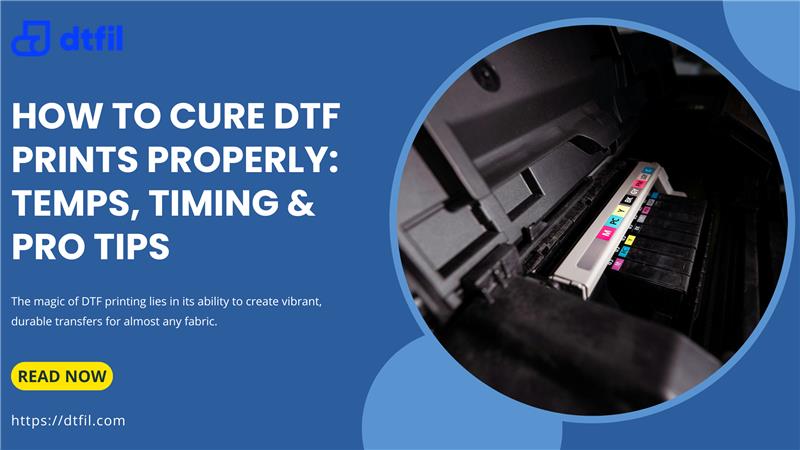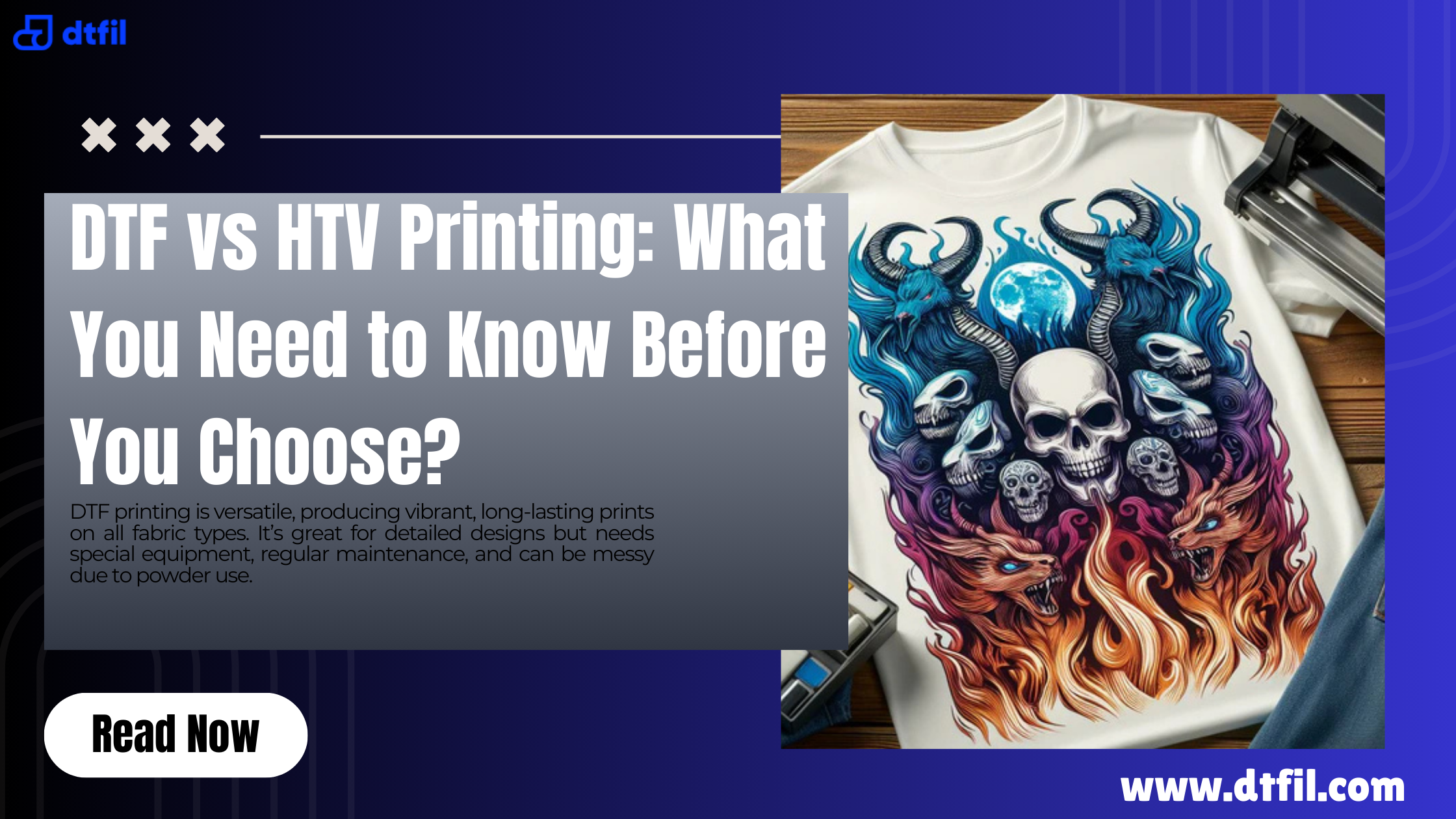In the ever-evolving world of fabric printing, a new technique has emerged that is redefining creativity and durability- DTF transfers. Direct-to-Film or DTF transfers have taken the industry by storm, offering an unparalleled combination of vibrant colors, minute details, and long-lasting wearability.
In this blog, we will help you to understand how DTF transfer is different from other transfer methods and its advantages. Understanding this will help you to make an informed choice about which transfer you should choose.
What are DTF Transfers?
Direct to Film or DTF heat transfers are a type of printing where patterns are transferred straight from a specific film onto textiles. Your clothing will stand out from the crowd when you print detailed and vibrant designs on a variety of textiles using the easy-to-use DTF method.
The Advantages of DTF Printing
Now, you might be wondering, "What makes DTF printing so special?" Here are a few advantages that set DTF apart from the other transfer techniques like DTG printing.
- Amazing Print Quality: A key benefit of DTF transfers is the amazing print quality it offers. It provides intricate designs with sharp details and vibrant colors that come to life effortlessly. Additionally, DTF prints exhibit superb color saturation, making them well-suited for capturing detailed artwork, gradients, and even photographs with impressive clarity.

- Soft and Flexible Results: Compared to alternative heat transfer techniques, DTF prints give the fabric a pliable, soft feel. Outstanding comfort and durability are made possible by the print becoming a part of the cloth itself. Even after several washes, the design keeps its color and resists fading.
- Versatility in Fabric: DTF transfers are effective on a variety of textiles, including blends, cotton, polyester, and even difficult-to-transfer materials like leather and nylon. This adaptability is especially helpful for companies or individuals who want to make personalized t-shirts out of various kinds of fabric.
- Durability: The prints created through DTF transfers are not just eye-catching; they're also durable. Your designs won't fade away after a few washes, ensuring your creations stand the test of time.
- Cost-Effectiveness: DTF printing is a cost-effective solution, especially for small to medium-sized batches. You get high-quality results without breaking the bank.
Also Read: Introduction to DTF Transfers
How is DTF Transfer Different From Other Transfer Methods?
Let’s understand how DTF transfer is different from the other transfer methods:
Direct-to-Film Printing Process:
DTF transfers stand out due to their direct-to-film printing process. Unlike some other methods that involve additional steps or layers, DTF prints your design directly onto a special film, ensuring a seamless and efficient transfer onto the fabric. This streamlined process contributes to the overall precision and quality of the final product.

Compatibility with Different Fabric Materials:
One of the distinct advantages of DTF transfers is their compatibility with various fabric materials. Whether it's cotton, polyester, blends, or even leather, DTF provides diversity, offering a versatile solution for those seeking customization on different surfaces.
Soft and Flexible Results:
DTF transfers not only excel in visual graphics but also in the tactile experience. The soft and flexible results ensure that your personalized designs not only look great but also feel comfortable to wear. This sets DTF apart, particularly when compared to methods that may result in a stiffer or less pliable finish.
Quick Turnaround Time:
In the fast-paced world of fabric printing, DTF stands as a beacon of efficiency. The direct-to-film process, along with advanced technology, allows for a quick turnaround time. This makes DTF transfers an excellent choice for those with tight deadlines or anyone looking to get their customized products promptly.
Cost-Effectiveness for Small Batch Orders:
DTF printing offers a cost-effective solution, especially for small to medium-sized batches. The efficiency of the process translates into affordability without compromising on the quality of the prints. This makes DTF an attractive option for individuals or businesses working with smaller quantities.
Conclusion
In conclusion, with a direct-to-film process, you get exceptional print quality along with compatibility with various fabric materials. The quick turnaround time and cost-effectiveness, especially for smaller orders, further solidify DTF's position as a versatile and efficient choice. If you want the best prints on your fabrics and clothes along with amazing fabric quality visit us at- DTF IL.

FAQs
How is DTF different from sublimation?
Sublimation and DTF are both printing methods, but the key difference lies in the materials they work with. Sublimation is ideal for polyester fabrics, while DTF can be used on various materials, including cotton, blends, and even leather.
What is the difference between heat transfer and DTF?
Heat transfer involves printing a design onto a transfer paper, which is then applied to the fabric using heat. DTF, on the other hand, directly prints the design onto a special film, providing more vibrant colors and intricate details.
What are the advantages of DTF?
DTF offers full-color brilliance, versatility in fabric choices, exceptional durability, and cost-effectiveness, making it a preferred choice for personalized designs.
How is DTF different from vinyl?
Vinyl involves cutting shapes from colored sheets and adhering them to fabric, while DTF prints the entire design directly onto the fabric. DTF provides a smoother, more seamless finish without the layering characteristic of vinyl.








